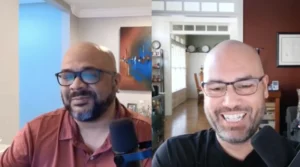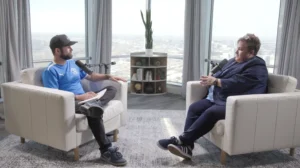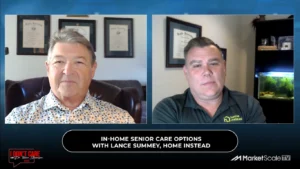What Will The Home Of The Future Look Like?
The Energy Exchange explores the complex and critical intersection of energy, money and technology. Experts will use their insights and forecasts to outline what energy is available to us, the costs associated with that energy production and its use, and the technological innovations changing the way we utilize Earth’s resources to power our way of life.
When Host David Hidinger talked to his grandfather, born in 1939, he relayed a story about how he was raised in a one-room home out west. But, contemporary homes have certainly advanced beyond a one-room shack. So, it leaves the question: what will the home of the future look like?
Joining Hidinger on The Energy Exchange to give insights on the future abode is Troy Morgan, President of Pantech Design, the developer of ADAPT, the leading software framework for programming Crestron automation software. Pantech launched in 2005, building the software and engineering of automation systems that go in homes, yachts, and other types of buildings. They grew into the energy side of things as they worked to fully automate homes by tying most aspects of a house together.
“A user would be able to set a lumen or light value for the room, and say, ‘I want this room to always remain at 800 lumens.‘” – Troy Morgan
With a lot of automation going into homes, the home of the future will most likely adjust based on certain circumstances. One of the main things will be energy. A house could automatically adjust its power based on the energy on the grid. If a home were to lose full power from a grid, a home could pivot to use solar panels or generators to keep the house running until power returns.
But, future homes will likely control more than the power. One example would be a home tracking the location of the sun. It would determine how much light is coming in a window and adjust the lumen value so that lights are minimally used during daylight.
“A user would be able to set a lumen or light value for the room, and say ‘I want this room to always remain at 800 lumens,’” Morgan said. “It will have a system that manages that with the shades and the interior lighting of the room. The room is self-aware now that it knows how much light is in a room. If we use a first or primary control mechanism to adjust the shades to control the lighting. If there’s no light coming in from the window, we now use the interior lights.”
Listen to Previous Episodes of the Energy Exchange Here!
Follow us on social media for the latest updates in B2B!
Twitter – @MarketScale
Facebook – facebook.com/marketscale
LinkedIn – linkedin.com/company/marketscale








